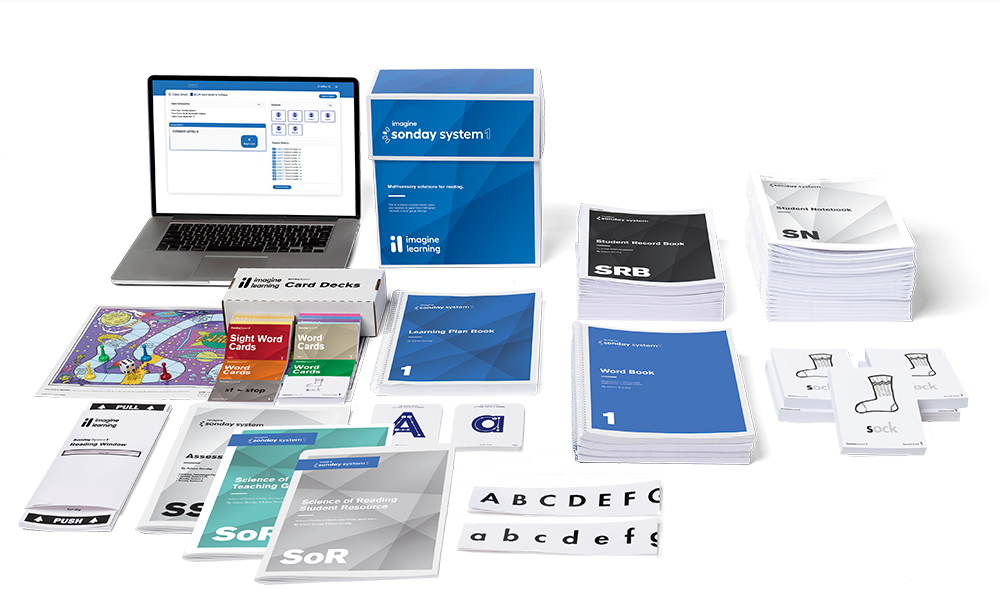SUPPLEMENTAL & INTERVENTION / GRADES PreK–12

Imagine Sonday System
Discover a proven, Orton-Gillingham approach to reading intervention. Using stage-based content and multisensory instruction grounded in the science of reading, Imagine Sonday System empowers educators to help struggling readers catch up.

Video Player is loading.
Implementation and Support Services
Support for every stage of the learning journey
Onsite and Online
Professional Development
Quickly empower educators to use Imagine Sonday System after just one interactive, hands-on training day.
Coaching and Online Courses
Ongoing Support
Imagine Learning experts help improve outcomes and increase instructional fidelity with ongoing support.
Onsite and Open Enrollment Online
Science of Reading Training
See how to implement effective literacy instruction with embedded science of reading activities to identify instructional needs, intervene, and help readers advance.



















